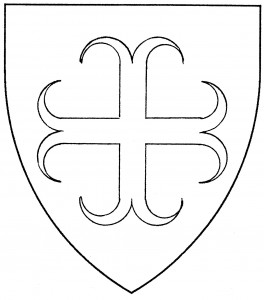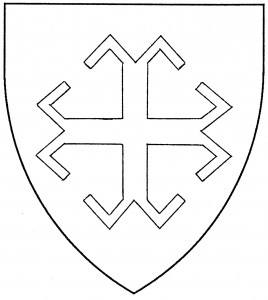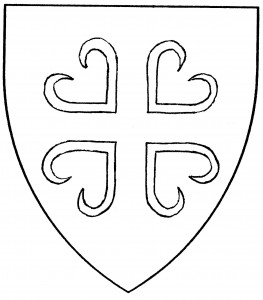The “cross moline” is one of the oldest variants, found in the arms of de Baucey, c.1244 [Asp2 215]; it was the original form of the millrind. In the English system of cadency, the cross moline is the brisure of the eighth son. Minor artistic variations have been blazoned as a “cross sarcelly”, “cross recercely”, or “cross ancry” by heraldic tracts, but the distinction was not observed in actual medieval armory.
There is also the “cross miller” or “cross millrind”, a more angular artistic variation; the distinction may be blazoned, but no heraldic difference is granted. Both the cross moline and the cross miller are negligibly different from the cross fourchy.
The “cross moline disjointed” is a period type of cross, found in the arms of di Manteli d’Alisandria, mid-15th C. [Triv 231]. Though the form is period, there is some disagreement as to exactly how it was blazoned: “cross sarcelly”, “cross resarcelly”, and “cross moline voided” have all been used for this charge – and each one has also been applied to other charges as well. To avoid ambiguity, Society blazons use the term “moline disjointed”.
Cecilia Dysney bears: Sable, three crosses moline Or.
Dawyd z Gury bears as a badge: On a cross miller azure, a compass star Or.
Isobel de la Rose bears: Per pale azure and argent, a cross moline disjointed counterchanged.


